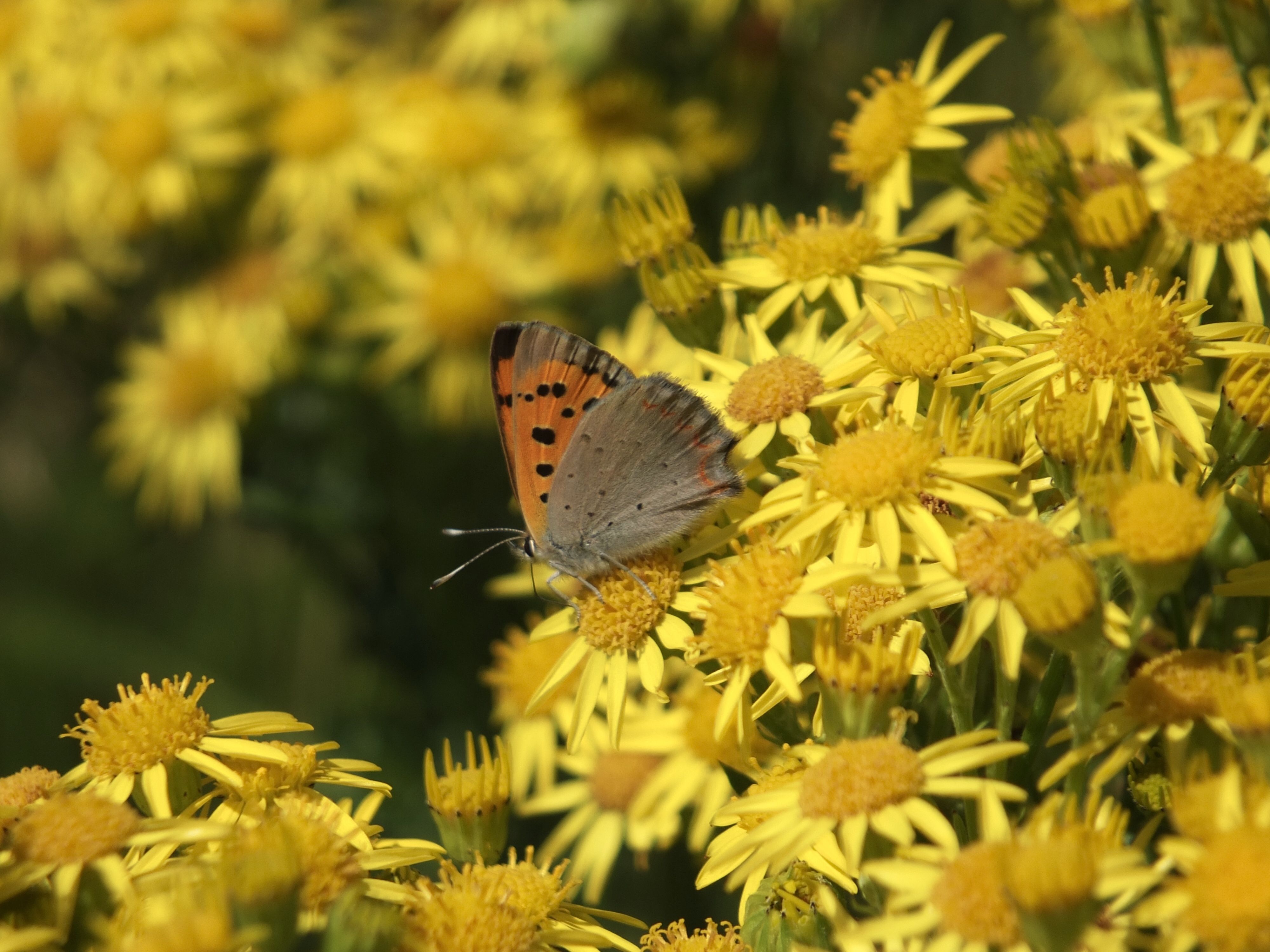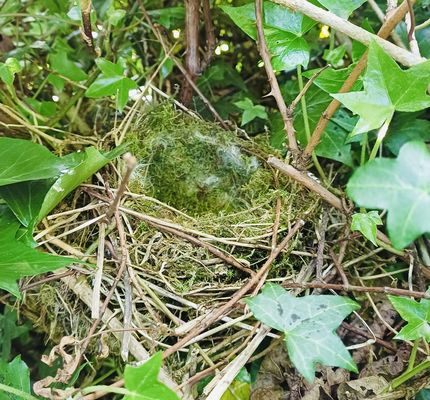ENDLESS days of continuous rain don’t do much for our mood, but what’s that they say about every cloud?
This damp squib of a summer has been a blessing for butterflies. Waves of them sweep through Dúlra’s garden every day now. When the sun goes down, large moths have started banging off the living-room window, so our dire summer must also be perfect conditions for them too. But although we have 20 times more moths than butterflies, it’s the brightly coloured daytime creatures that get all our attention. And they are so much easier to capture on camera than jumpy birds. These three beautiful butterflies were snapped by Dúlra this week, two in his garden and one on Black Mountain.
The small copper – copróg bheag in Irish – looks glorious against the bright yellow of the ragwort on which it landed. Dúlra was able to get right up beside it on the hillside, but the story here is as much about its food plant as it is the insect itself. Ragwort is branded a “noxious weed” by the our Department of Agriculture, and farmers are encouraged to kill it with herbicides.
But one farmer in England has taken a stand against this perceived wisdom and what he calls “scaremongering” and is trying to encourage others to do likewise. This guy lets it grow as it wants and finds that his livestock don’t get sick by eating it – they’ve learned over many thousands of years that’s it’s best left alone and they graze around it.
The plant can indeed be dangerous if the field is being cut for hay, as it will be mixed with the grass. But if the animals are just grazing, then it’s harmless to them, he says. The chances of our authorities embracing this sort of logic, however, is sadly nil. Branding wildflowers as weeds and zapping them is a much more straightforward message.
Ragwort sustains something like 40 insects, including this gorgeous small copper. And it’s the food plant of the cinnebar moth caterpillar, which is very common on our hills. Its caterpillars have black and yellow stripes – classic wasp-like colours which tell birds that they are poisonous. Except they’re not at this time. They just adopt those colours as a trick to scare off birds and get them over their most vulnerable stage. It’s only when they actually eat the ragwort leaves that they build up enough poison in their bodies.
Belfast gardens – at least Dúlra’s and his neighbour’s – have seen green-veined white butterflies blowing over them like confetti. This is probably the most common of Ireland’s 32 butterflies (isn’t it handy we get one for every county?).
The second one photographed by Dúlra this week feeding on a wild rose seems like a holly blue, an uncommon but cute wee butterfly that has recently appeared in the garden. As its name suggests, this butterfly needs holly trees or, later in the year, ivy to reproduce.
HOLLY BLUE: An uncommon but cute wee butterfly
The final one Dúlra pictured this week is the stunning painted lady, áilleán in Irish.
Amazing as it may seem, this butterfly flew all the way from Africa to feed on Dúlra’s red valerian in the pouring rain. With such beauty literally on our doorsteps, who needs the sun?
AMAZING: This painted lady flew all the way from Africa
• Mountain man Tom Doyle reports this week that another tiny creature has come into season on Colin Mountain – the grasshopper.
When Dúlra was up on the hillside with Tom a few weeks ago, the lush, ungrazed grass was full of wild flowers, but not a single cricket or grasshopper could be heard.
“This week I went up and the place was literally buzzing with them,” Tom told Dúlra this week. “There were that many of them I was able to pick two of them up.” Grasshoppers are very wary of people and stop calling as soon as you appear in the vicinity. So spotting them – or even picking them up – is not easy. “Ladybirds too have burst into life on the hill,” Tom said, “many plants are covered with them.”
Any birds raising a second brood of chicks on the hillside at this time of year will find plenty of food for those hungry mouths!
If you’ve seen or photographed anything interesting, or have any nature questions, you can text Dúlra on 07801 414804.









